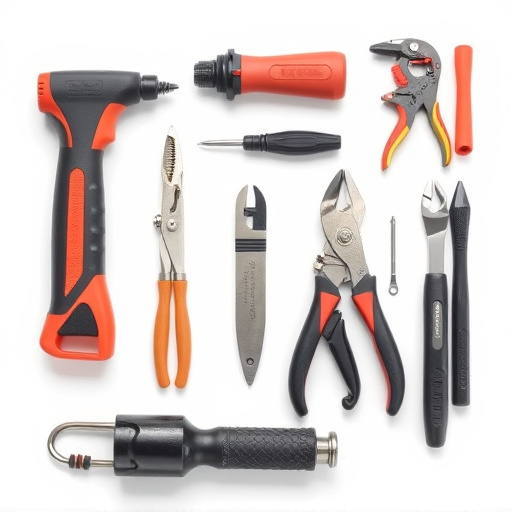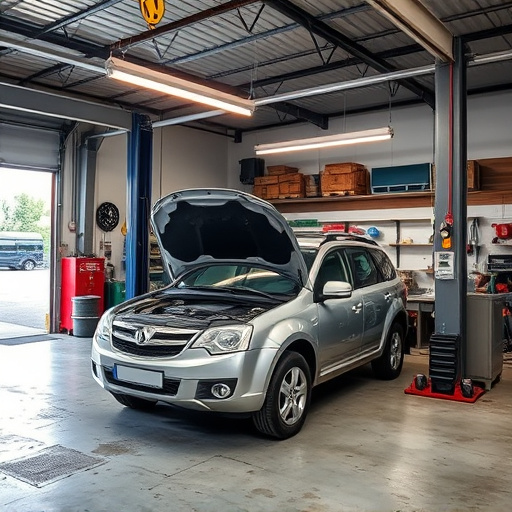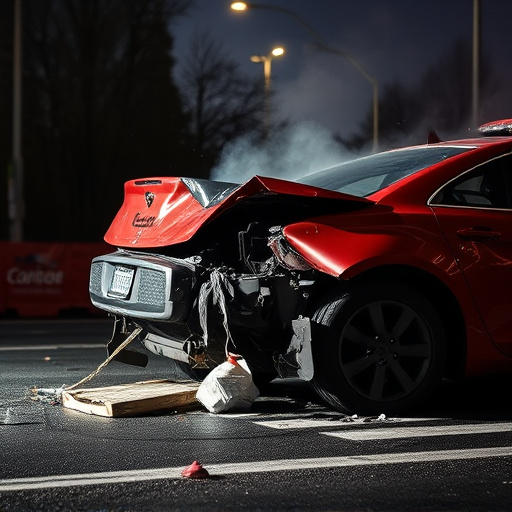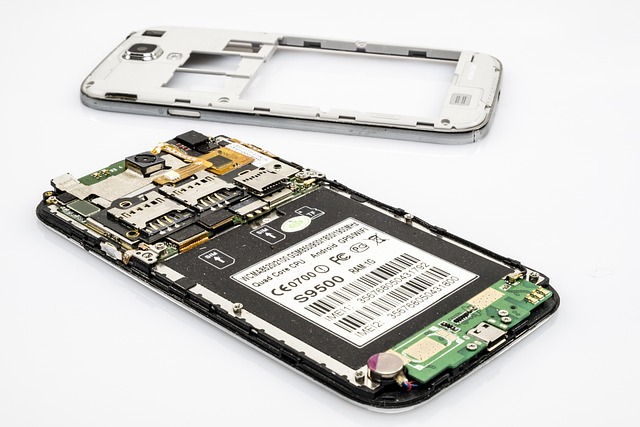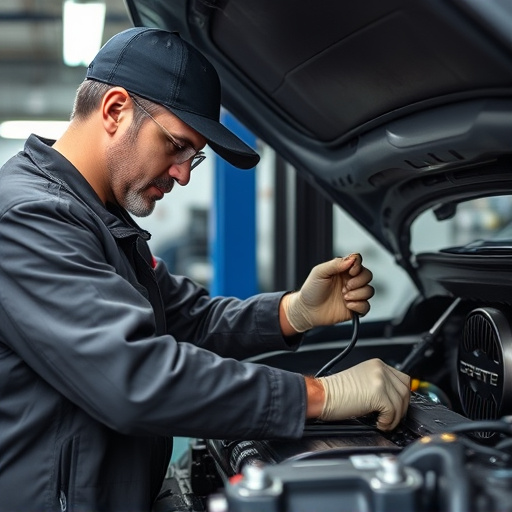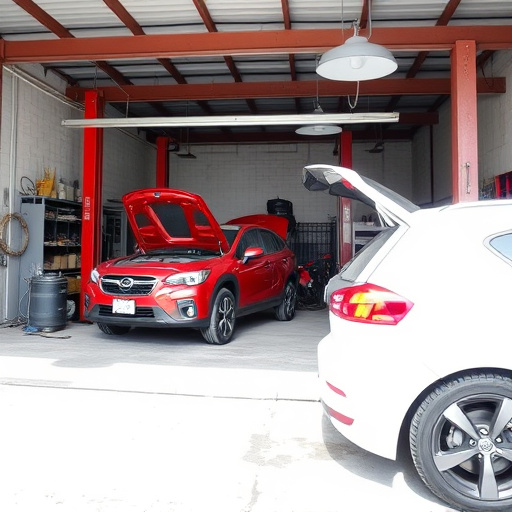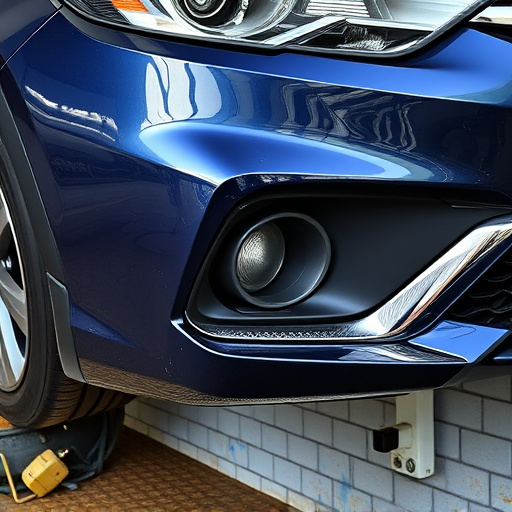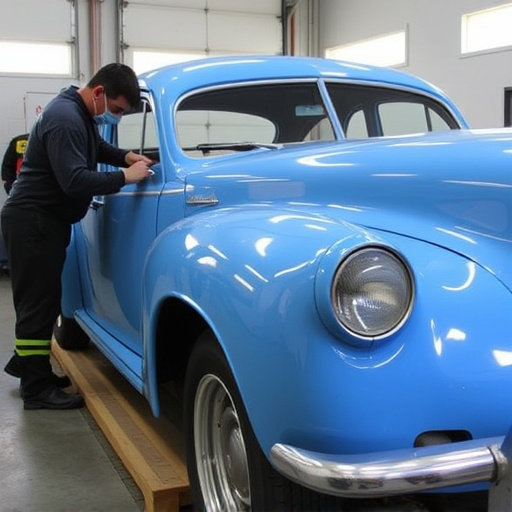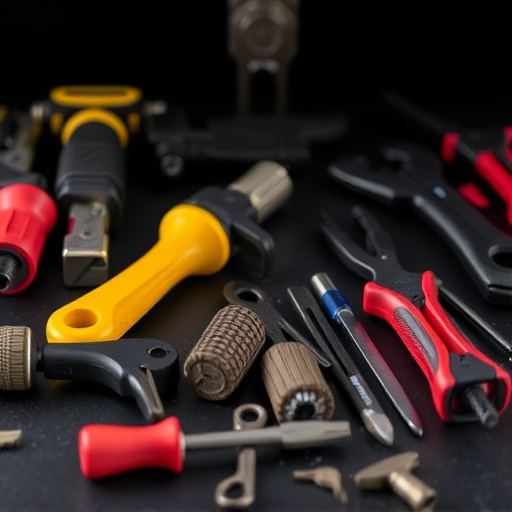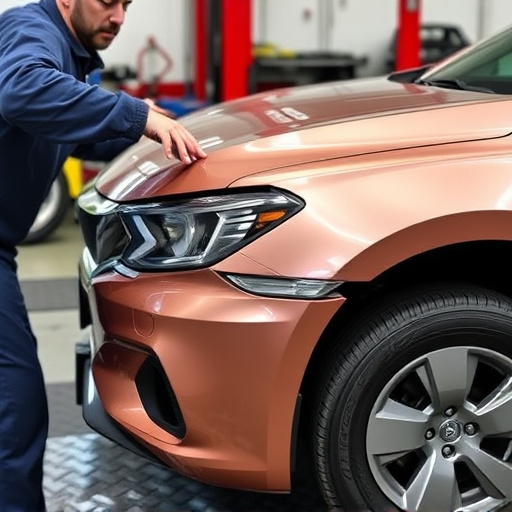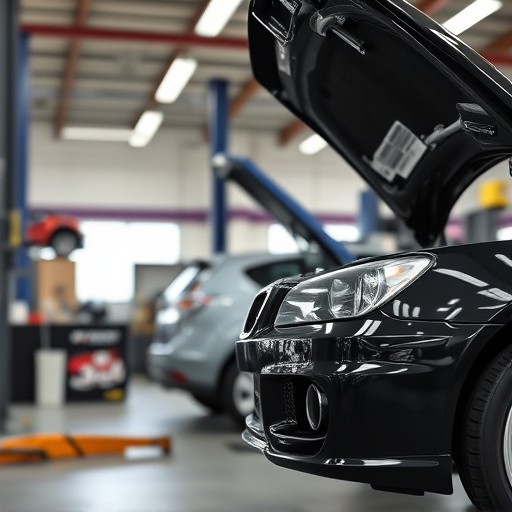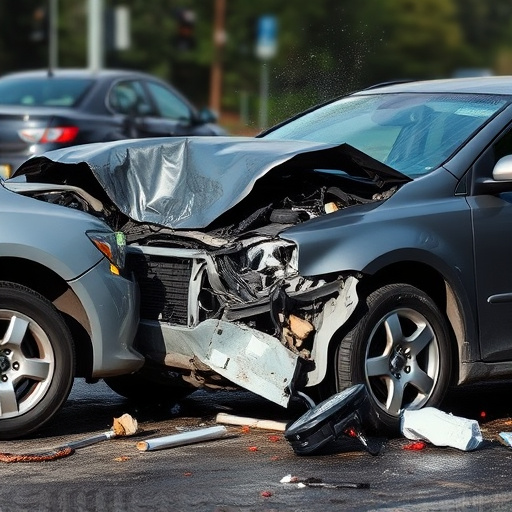Corrosion, a natural process causing metal deterioration, demands robust corrosion protection procedures in auto body shops. This involves thorough inspections, surface preparation, applying corrosion inhibitors/primers, and using high-quality coatings. Proper staff training and regular maintenance checks ensure long-lasting vehicle protection, enhancing performance and driver safety by preventing rust spots and ensuring structural integrity.
In the realm of maintenance and preservation, understanding and mitigating corrosion is paramount. This article delves into the crucial responsibilities of repair shops in implementing effective corrosion protection procedures. By exploring the intricate details of corrosion and its profound impact, we uncover essential steps that form the backbone of robust protection strategies. Furthermore, we highlight best practices, offering a comprehensive guide for repair shops to safeguard against this relentless enemy, ensuring longevity and efficiency in their operations.
- Understanding Corrosion and Its Impact
- Essential Steps in Corrosion Protection Procedures
- Best Practices for Effective Implementation
Understanding Corrosion and Its Impact
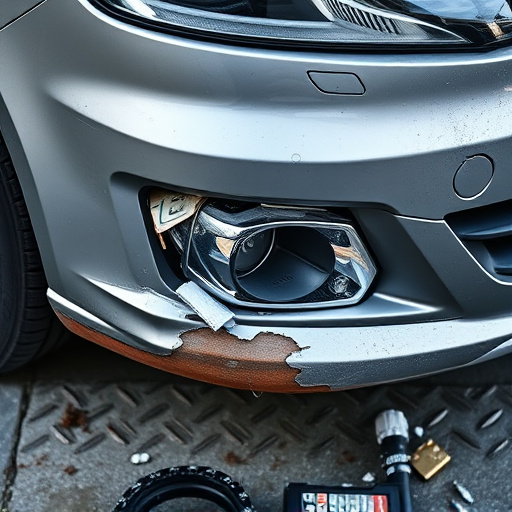
Corrosion is a natural process that occurs when certain metals interact with elements present in the environment, such as moisture and oxygen. This reaction can lead to the deterioration of metal surfaces, resulting in weak spots, cracking, and eventual failure. In the context of vehicle maintenance, corrosion protection procedures are essential to safeguard the structural integrity of vehicles, particularly in auto body shops where vehicle paint repair and auto body repairs are common practices.
The impact of corrosion on vehicles is multifaceted. It not only compromises the aesthetics of a vehicle by causing rust spots and peeling paint but also undermines its safety and performance capabilities. Corroded components can become brittle and weak, posing potential hazards during driving. Therefore, auto body shops have a crucial responsibility to employ effective corrosion protection measures as part of their routine maintenance services, ensuring the longevity and reliability of vehicles brought in for repairs, including auto body repairs and vehicle paint repair processes.
Essential Steps in Corrosion Protection Procedures
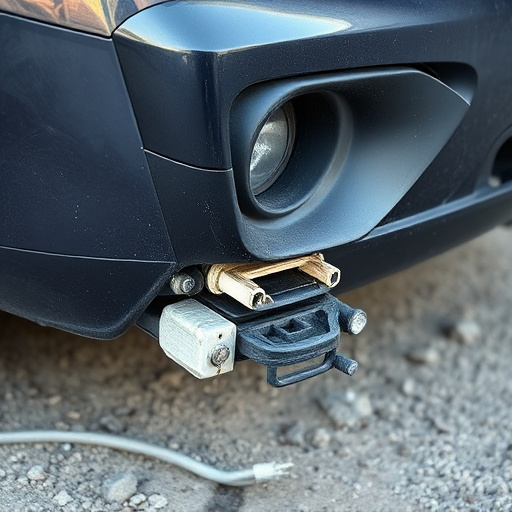
When implementing corrosion protection procedures, repair shops must adhere to several essential steps for optimal results. The initial phase involves thorough inspection and assessment of the vehicle’s condition, focusing on vulnerable areas like metal joints, welds, and undercarriage. This step is crucial as it identifies existing corrosion and determines the extent of treatment required.
Next, proper surface preparation is key. This includes removing any loose rust, debris, or old paint through sandblasting or chemical stripping. The surface must be thoroughly cleaned and decontaminated to ensure optimal adhesion for subsequent coatings. After preparation, applying a suitable corrosion inhibitor or primer is vital. These products create a protective barrier against moisture and environmental elements, significantly slowing corrosion’s progression. This layer serves as the foundation for high-quality car bodywork services and auto painting, ensuring longevity and a vibrant finish.
Best Practices for Effective Implementation
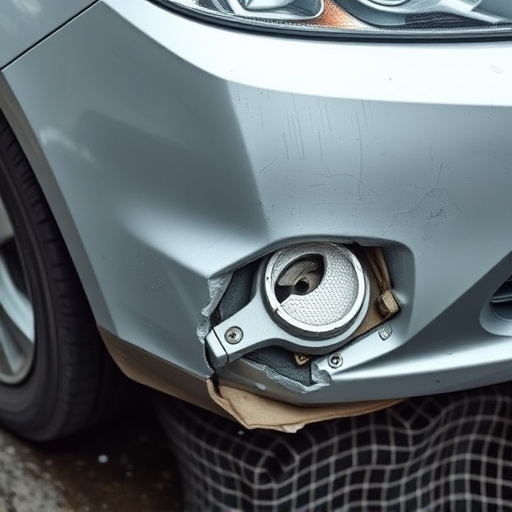
Implementing corrosion protection procedures is a multifaceted task that requires meticulous attention to detail and adherence to best practices. To ensure the longevity and integrity of car bodywork, repair shops must start by thoroughly inspecting the vehicle for existing damage or signs of corrosion. This involves examining not only the visible parts but also hidden areas like welds and panel gaps, which can be hotspots for rust development. Once identified, these issues should be addressed before applying any protective coatings.
Effective corrosion protection goes beyond surface preparation. It includes using high-quality primers, paints, and sealants suitable for automotive body work. The right products, applied correctly, form a robust barrier against environmental elements. Additionally, proper training for staff on the latest corrosion protection procedures is vital. This ensures that every step, from surface cleaning to final coating, is executed flawlessly. Regular maintenance checks post-repair are also crucial to monitor the protective coatings’ integrity and address any emerging corrosion issues promptly.
In conclusion, effective corrosion protection procedures are vital for maintaining the integrity and longevity of structures and equipment. By understanding the cause and impact of corrosion, following essential steps in corrosion protection procedures, and adopting best practices for implementation, repair shops can play a pivotal role in safeguarding against this pervasive threat. These measures not only enhance the lifespan of assets but also contribute to cost-efficiency and safety in various industries.
